Rothko & the power of the word 'and'.
How art and layered thinking can help solve our conflicts.
Today at the Louis Vuitton Foundation in Paris I viewed 115 Rothko paintings. I was excited to have the opportunity and then, to be honest, I found myself a little underwhelmed. This, I understand is probably a form of art apostasy. And yet, the promised luminosity seemed to be absent. Of course we bring to our art viewing our own moods and sensibilities. Given the main focus of the news over the last few weeks, my ability to perceive brightness has been dimmed by constant reporting of the deaths and bone-deep suffering of people on both sides of the Gazan wire. I went in with a malady of the soul and saw it reflected back at me. Then I looked some more and found a soothing balm being offered.
This discovery was aided by the fact that I have an old lady bunion which, all of three days into our trip, is complaining at having to walk so far on city streets. When I saw that the gallery offered small ‘siège pliant’ for viewers to perch on I took one. There is plenty of bench seating at the centre of the large halls but this little camping stool allowed me to set up right in front of the painting. Rothko liked his paintings hung low so they enveloped the whole person and this effect was heightened as I sat with the art towering above me about a foot and a half from my nose.
Rothko : small detail
I was able to rest and immerse and as I allowed my eyes to stay on one small part of the colourfield my mind settled a little too. The sedimentary emotions I was carrying that swirled and blinded like a desert sand storm began to drop and settle. Torrid arguments over history, blame and justification, so often one-sided and over-simplistic began to quieten and my perceived need to watch, to moderate, to always be present to restore balance and check for accuracy abated. It was me and the canvases. I wanted to look, to really look. What did these troublesome pieces have to offer me today?
It is so easy to gallop past difficulty, taking a sweeping jab at it with a jousting pole of words: “Overrated, hyped, just colour,”’ we might say of Rothko on an unappreciative day. “Not my thing. Prefer Basquiat. Ah well, let's go find some Soupe l’onion gratinée. And a crepe.” Or we might glance at the news in passing, using barbed words to stab at a whole array of people whom we believe are not like us. “Can’t be trusted. Nothing will change. Let’s move on,” we might say, heading for the sport pages. Or more alarmingly, “Let’s move over. Let’s move against. Let’s destroy.”
Sitting with difficulty is harder. Being still with complexity, challenges us. Recognising the value in duality, the complex interdependence between the red rectangle and the black one stimulates corresponding thoughts about the interwoven nature of all political instability. We cannot look at a Rothko and say, “I pick the red over the black or the black over the red”, because the edges blend. The very presence of one influences the identity of the other. Each is a vital part of the whole, just as the life of each person in this world bleeds into that of the others. It is not a question of picking a side.
In mechanical or digital reproduction the Rothkos appear flat, their blocks of colour somewhat shaded and faded, but essentially solid and blocky. From eighteen inches away, nearer if you lean forward a little and hope the security guard does not challenge you, lines dissolve and subtle texture appears. The hand of the artist becomes apparent in scrapes, smears and droplets. The person appears in the abstract.
Rothko: small detail
Out of respect to fellow visitors I did not set up the stool square to the painting but sat off to the left. Then I would upend myself and move to to the right of the canvas. These oblique sightlines allowed the light to illuminate subtleties and moments of the unexpected. I saw tiny flecks fallen from the brush, a slight wobble in a line, a pucker of paint. I would then fold my chair and walk past the paintings, arching my neck upwards and looking down at my feet. In this way, as I stood where the artist had once stood, I saw not only the artefact of his studio days but the moments of his life. As I shifted my feet, the canvas moved with me morphing from mere object to a dialogue. The painting only gave up its secrets once I was willing to leave my fixed position.
As I engaged, lingered, made myself different from the milling crowds who moved from one audio described image to the next, standing briefly square on, taking in what they were told, I found the depth Rothko sought to place in his work. And that depth lay in the humanity of its making.
Rothko once wrote:
“The experience of depth is an experience of penetration into layers of things more and more distant.”
This week I have been pestered by social media memes trying to justify one political position or the other by going back to the earliest of early history as if what we need is a simple tug on a string to unravel the Middle Eastern conflict to the first cast on stitch of land occupation and - lo! - the world will have its solution. This erasure of experience is not what Rothko was teaching us in his art.
Rothko: small detail
The blocks of colour he presents are hauntingly beautiful because of what is on top as well as what is below. There are ghost marks and phantom clouds, apparitions, coverings and revelations. The layers shimmer and dance, adding, subtracting, morphing, connecting, parting. It is a process of addition, of combination, the mingling of differences to form a complex whole. The invitation to penetrate is not a suggestion we should go backwards to what was but an invitation to appreciate how much has been added whilst still preserving the past. It is not a penetration of destructive insertion and damage but the penetrative understanding which originates from keenness of mind, discernment and insight.
As those sedimentary emotions stilled I was left with the understanding that what we need most in these days is the ability to use the simple but powerful word ‘and’. Art allows us to practise this. Sitting on our stools we can say: “This block is grey and brown and a little pink even. This one is white and grey and a little blue.”
Then, if we can tolerate holding all those things in one whole we can learn to say of the world: “That act was barbaric and this one is causing untold suffering and unless I guard my humanity and refuse to fall prey to blinkered one-sidedness I might too set unaware feet on the road to cruelty. For rape and pillage is cruel and wholesale destruction is cruel and refusing to care about a fellow human just because they are not like us is a form of cruelty too.”
Then with this expansion of our capacity that started with art and moved to the world we can return to our own art with a renewed understanding of how impactful we can be as an artist. How an exploration of light and luminosity can reverberate down decades in entirely unforeseen ways into circumstances entirely unimagined. We can resolve the conflicts we may find in our own creative practice with words such as: “Today I will play with materials for fun and I will make something commercial out of that and I will set my art free as a gift of wisdom to people unknown.
For you to ponder:
In your own practice or life, where do you think in dualities? Where might it help to let the edges soften?
From the studio:
My studio is closed this month as I enjoy Paris, replaced by a simple handbag sized concertina sketchbook, a Moleskine travel journal, a Selphy printer and two black pens. So here instead is a glimpse inside the studio of Rothko.
.
And finally, a blessing…
May you travel widely and peacefully in body, mind and spirit through areas unfamiliar, with people unknown and may you return home deepened in understanding and emboldened in purpose.
Shalom,
Helen
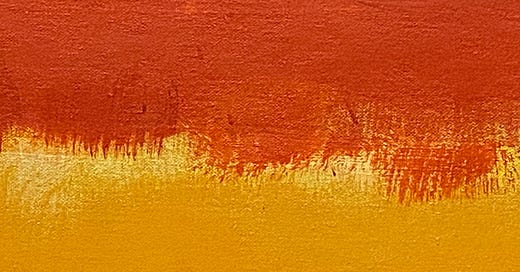

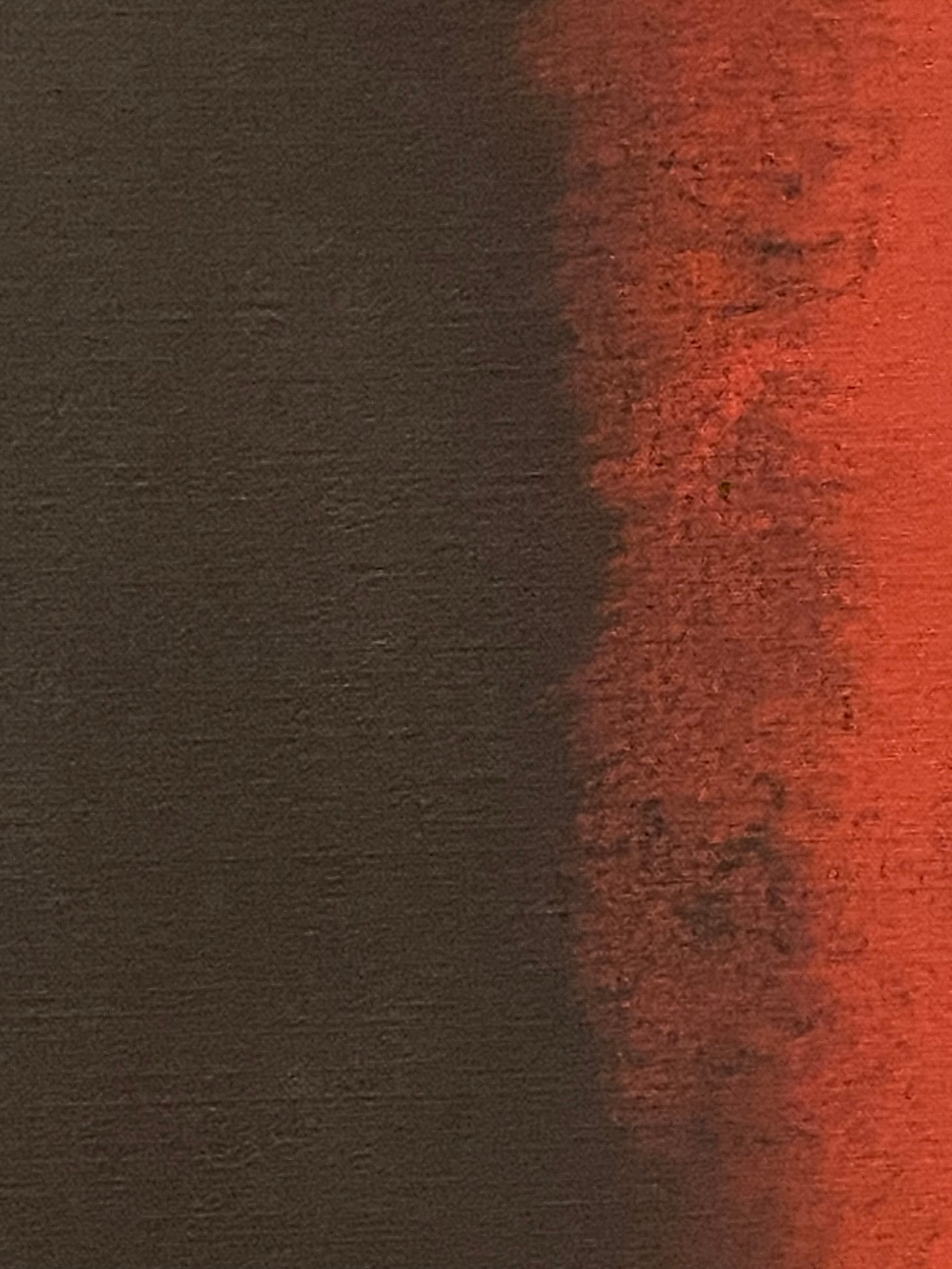
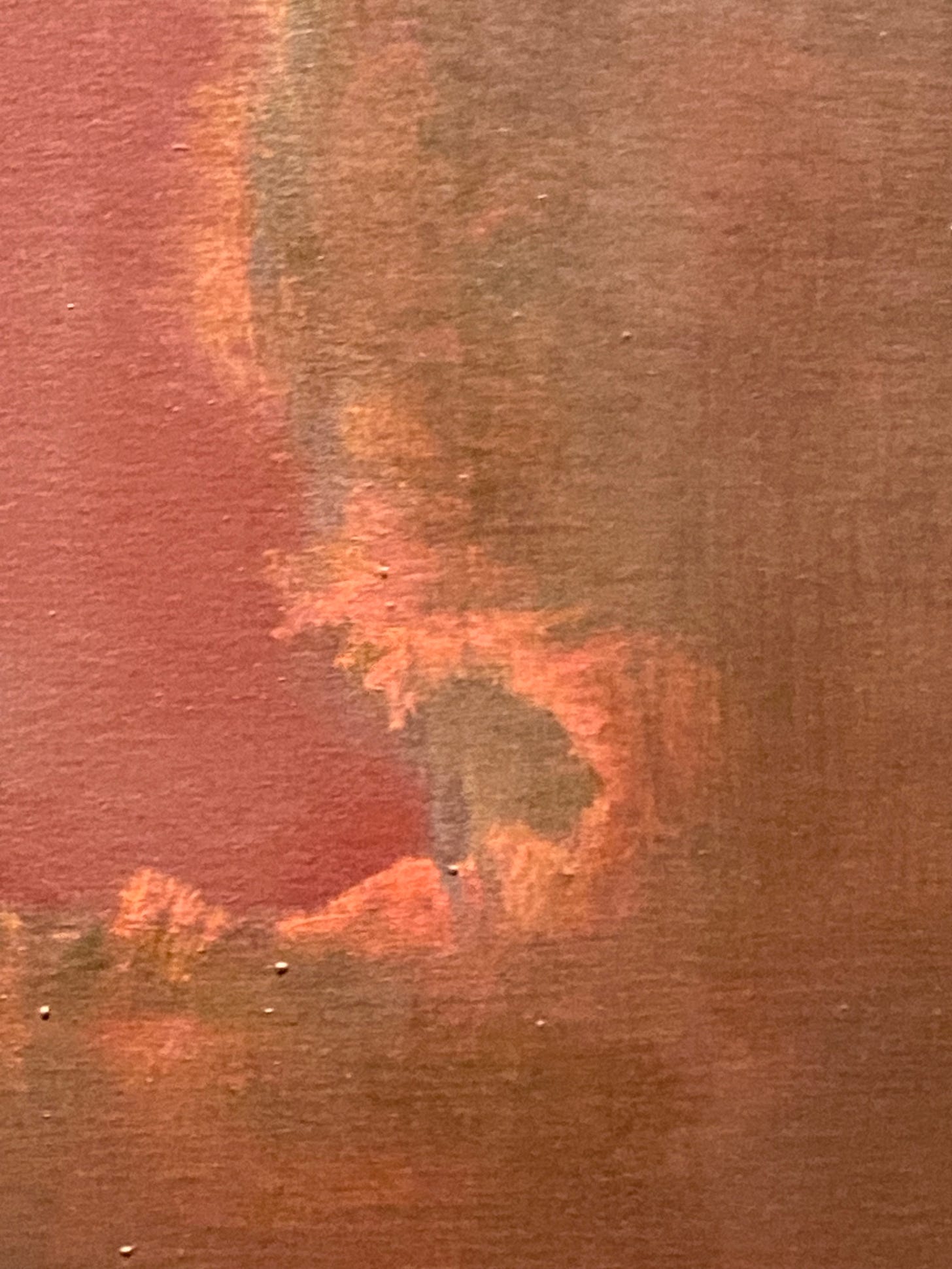
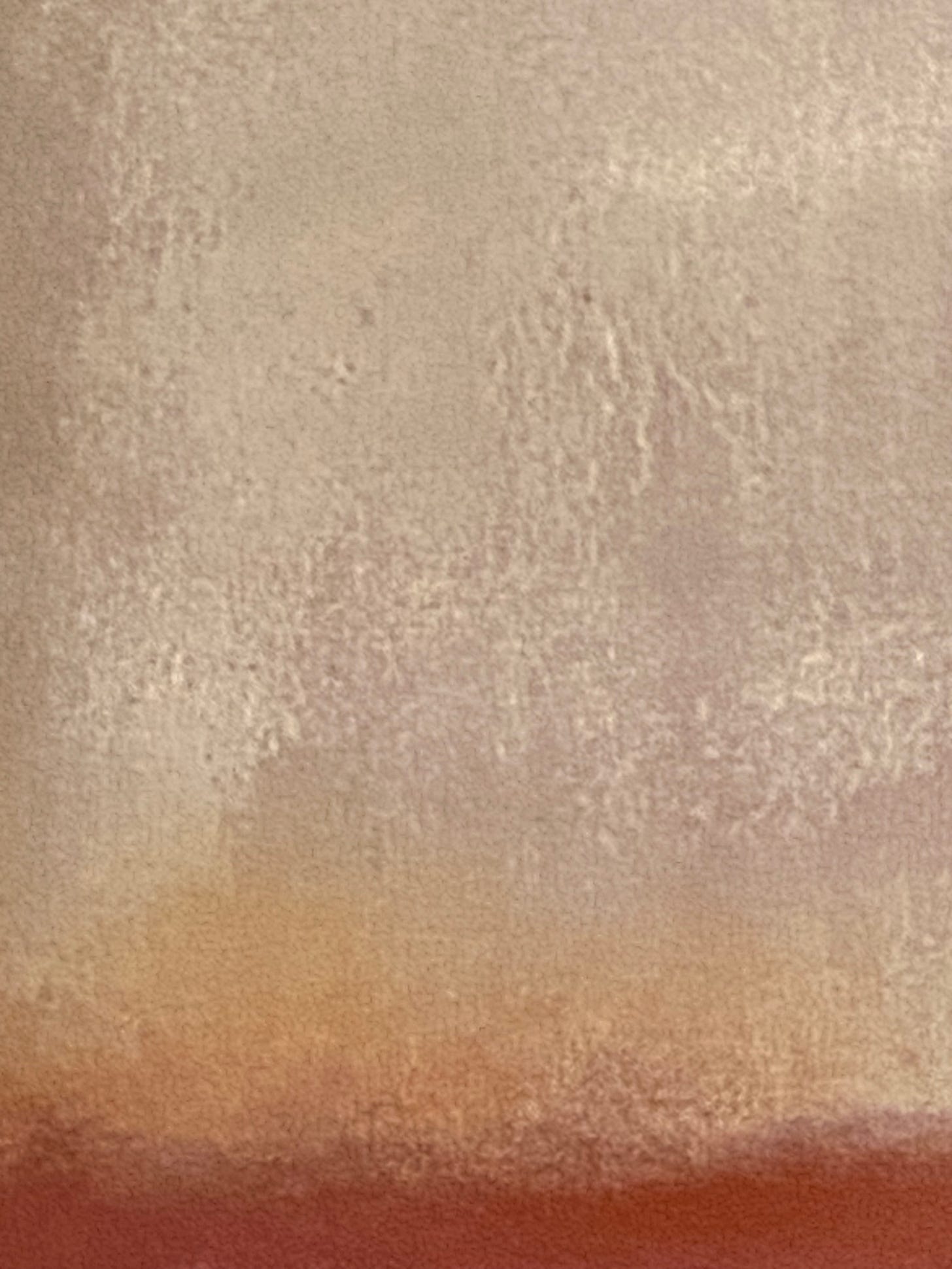
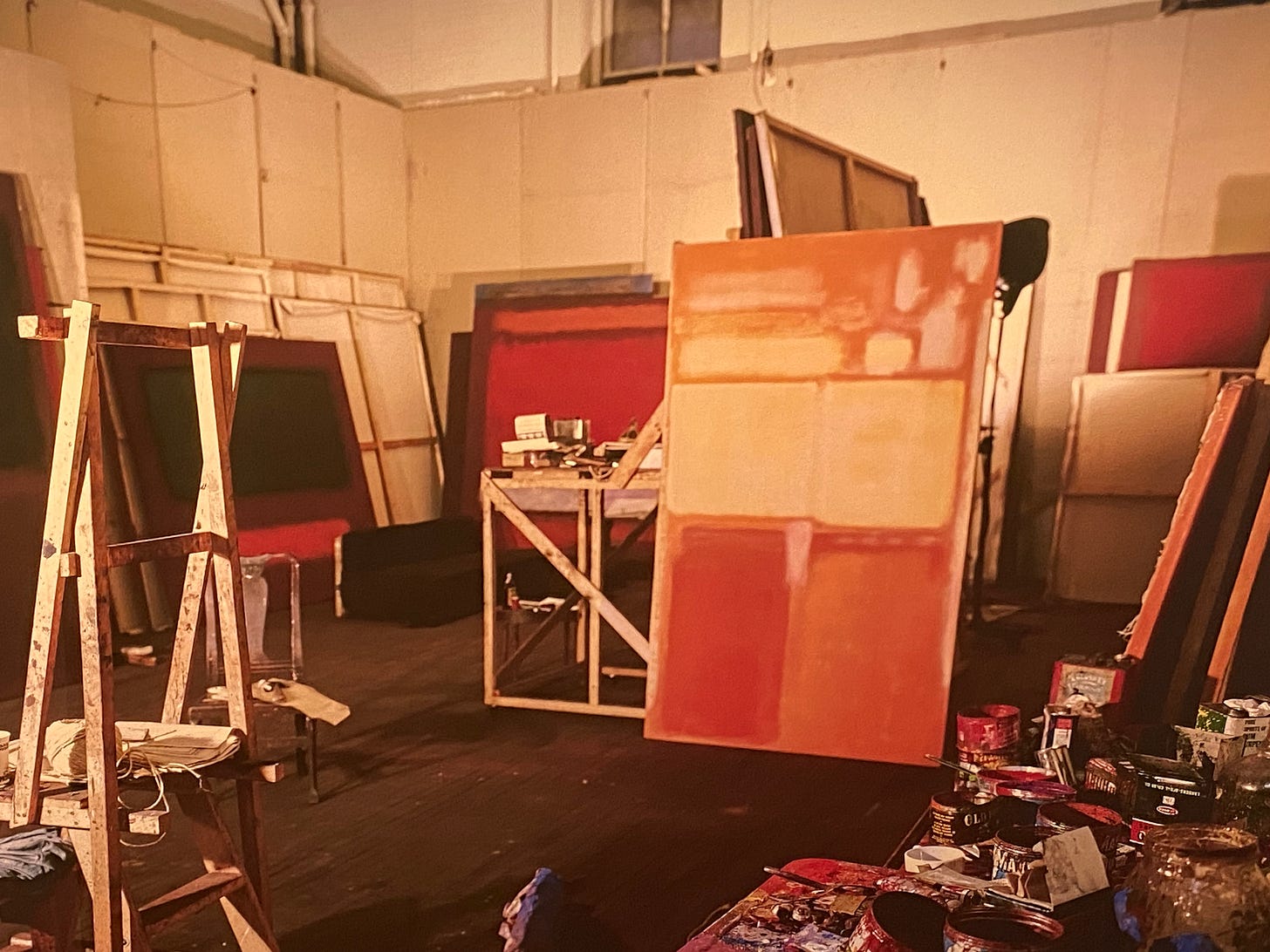
"Being still with complexity, challenges us." I've never appreciated the complexity of Rothko but your description of taking the time to really look at his work and hold the "and" of all of the colors, marks, scrapes and soft edges does help me hold the paradox of all the sides of the complex human tragedy unfolding whether we see it or turn our eyes away.
Loved reading this. Thank you